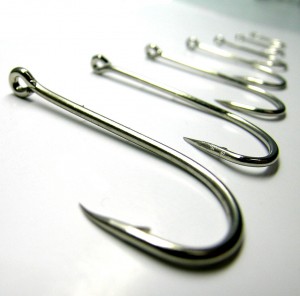At Cockle Legal Briefs, we work with quite a few non-lawyers who are looking for legal writing tips to help them draft a stronger petition for the U.S. Supreme Court. Occasionally our conversations with our pro se customers move beyond the necessary formatting and content requirements for a Supreme Court brief, and into more basic questions of legal writing. Over time, we have come up with some general legal writing tips. I have previously posted tips, here, here, here, and here, and today I offer more legal writing tips, focusing on the Question Presented.

Legal Writing Tips: Your QP is the hook that grabs the Court’s attention.
The Question Presented (QP) might be the most important part of a petition for writ of certiorari. That section appears on the first page of the brief, immediately following the cover. This is where the justices and their clerks will begin their consideration of the petition. Here are some legal writing tips to help you strengthen your QP.
Ideally, the QP should fit onto a single page. This gives the reader a strong visual cue that your appeal can be addressed as central, discrete issue, rather than a laundry list of perceived injustices below. A typical page in the Supreme Court format holds about 230 words, so the QP should stay within that word limit.
You can use a true question form—“Did the lower court err when it…?”—or the indirect “whether” form—“Whether the lower court erred…” Remember, indirect questions end with a period, not a question mark.
The QP should be phrased in a way that suggests to the reader an answer that supports granting the writ. And that answer should be either “yes” or “no.”
Do not ask repetitious questions, or simply rephrase the same question over and over. If your QP is strong, your reader will not need to read it again.
The QP should identify the specific constitutional or statutory provision that lies at the heart of the dispute. Very often, this is the provision that you feel the lower court has misinterpreted or misapplied in your case.
The QP should not focus on conflicting lower court precedent. Certainly, a circuit split suggests a strong incentive for the Court to grant the petition, but a split is not, in itself, the legal issue. Most commentators, however, do recommend adding a short reference to the conflict, at the end of the QP.
If your first draft of the QP comes out as a long, convoluted mess, try: a) beginning with a short introductory paragraph that sets up the barest relevant facts and history of the case, then finishing with a short, direct QP; and b) breaking a long QP into two or three separate questions.
You can find more great legal writing tips for writing a winning brief in our white paper, “How to Write a Winning Appellate Brief.”